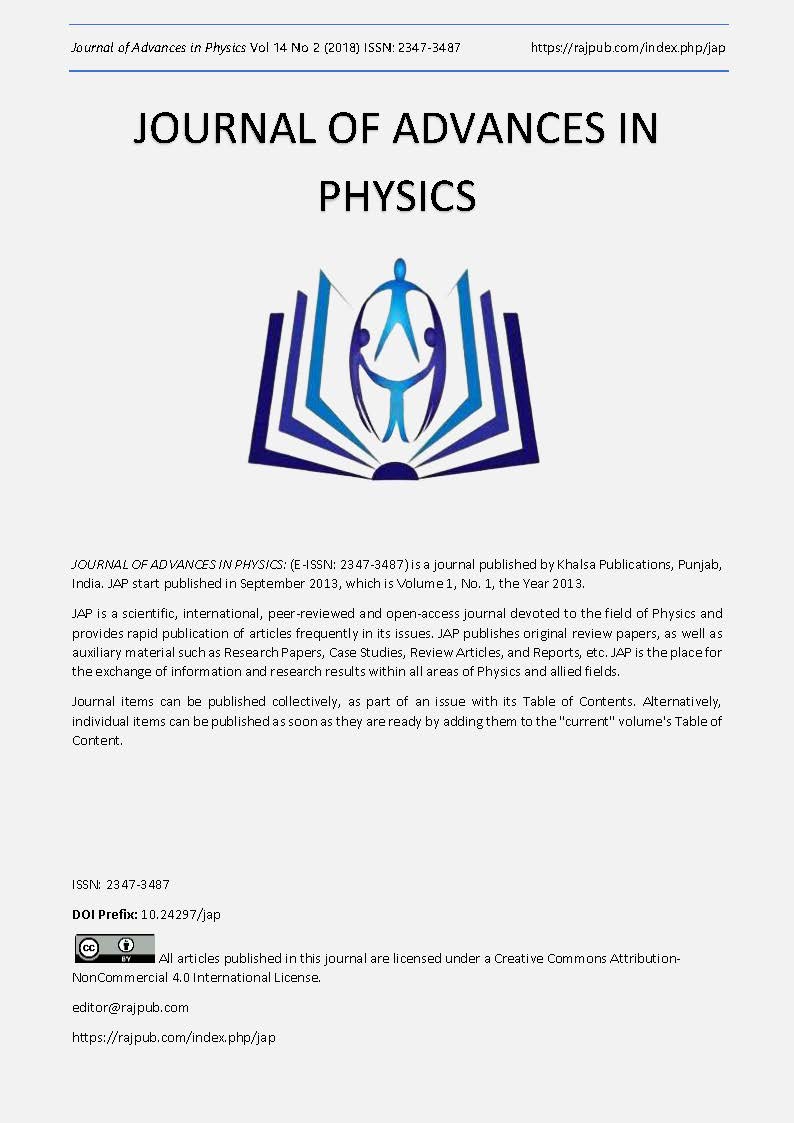Constructing and Characterizing TiAlN Thin Film by DC. Pulsed Magnetron Sputtering at Different Nitrogen/Argon Gas Ratios
DOI:
https://doi.org/10.24297/jap.v14i2.7542Keywords:
TiAlN thin film, Dc. Pulsed magnetron sputtering, nitrogen gas ratio, microhardness, wear rate, surface roughness, corrosion resistanceAbstract
In this survey, the magnetron sputtering with Dc. Pulsed mode was embroiled to deposit TiAlN thin film on AISI 316 as a substrate. All the plasma magnetron parameters were fixed excluding the nitrogen gas ratio which was varied from 10% to 50% with step interval of 10% with respect to argon. The structure, mechanical, tribological and electrochemical peculiarities of TiAlN films were studied. The TiAlN deposition rate is decreased in regard with increasing the nitrogen gas ratio where, the film thickness recorded a maximum value of 3 µm at nitrogen gas ratio of 10 %. X-ray configurations demonstrated the formation of solid solution phase of TiAlN with different orientations. The TiAlN coating has (111) preferred orientation at 10 and 20% nitrogen gas ratios while has (200) preferred orientation at 30- 50% nitrogen gas ratios. The crystallite size is decreased with increasing the nitrogen gas ratio. The results depicted that, the microhardness of TiAlN film is increased with decreasing the nitrogen gas ratio and recorded a maximum value of approximately 850 HV0.015 at 10% N2. Additionally, the tribological properties of the coated AISI 316 with TiAlN are enhanced compared with the uncoated sample. The wear volume loss of the coated sample at 10% N2 has a value of nearly 9X104 µm3 which is low in comparison with AISI 316 substrate that has a value of 4.5X106 µm3. The corrosion resistance of all TiAlN coatings was better than the uncoated sample. It was demonstrated; the change in nitrogen gas ratio affected the physicochemical characteristics of the TiAlN coating.
Downloads
References
S. Paldey, S.C. Deevi, Mater. Sci. Eng., A 342 (2003) 58.
W.D. Mu¨ nz, L.A. Donohue, P.Eh. Hovsepian, Surf. Coat. Technol. 125 (2000) 269.
F. Weber, F. Fontaine, M. Scheib, W. Bock, Surf. Coat. Technol. 177– 178 (2004) 227.
H.G. Prengel, A.T. Santhanam, R.M. Penich, P.C. Jindal, K.H. Wendt, Surf. Coat. Technol. 94– 95 (1997) 597.
P.J. Kelly, R.D. Arnell, Vacuum 56 (2000) 159–172.
Schiller S, Goedicke K, Reschke J, Kircho! V, Schneider S, Milde F, Surf Coat Technol 61 (1993) 331–337.
Scherer M, Schmitt J, Latz R, Schanz M, J Vac Sci Technol A 10 (1992) 1772.
F. M. El-Hossary, A. M. Abd El-Rahman, M. Raaif, Shuxin Qu, Junsheng Zhao, Manfred F. Maitz, M. Abo EL-Kassem, Applied Physics A 124 (2017) 42.
ASTM standard E384, 2011, ASTM International, West Conshohocken, PA 19428-2959, United States, DOI: 10.1520/E0384-11.
J.V. Ramana, Sanjiv Kumar, Christopher David, V Raju, Materials Letters 58 (2004) 2553– 2558.
L. Chen, M. Moser, Y. Du, P.H. Mayrhofer, Thin Solid Films 517 (2009) 6635–6641.
Yongqiang Wei, Chunzhi Gong, Applied Surface Science 257 (2011) 7881–7886
S. Chinsakolthanakorn, A. Buranawong, N. Witit-anun, S. Chaiyakun, P. Limsuwan, Procedia Engineering 32 (2012) 571 – 576.
Yan Pei, Deng Jianxin, Wu Ze, Li Shipeng, Xing Youqiang, Zhao Jun, Int. Journal of Refractory Metals and Hard Materials 35 (2012) 213–220.
Wenji Zhao, Fanghua Mei, Yunshan Dong, Geyang Li, Journal of Materials Processing Technology 176 (2006) 179–182.
L. Ipaz, J.C. Caicedo, J. Esteve, F. J. Espinoza-Beltran, G. Zambrano, Applied Surface Science, 258 (2012) 3805-3814.
S. PalDey, S.C. Deevi, Materials Science and Engineering A342 (2003) 58-79.
Martin Fenker, Martin Balzer, Herbert Kappl, Surface and Coating Technology 257 (2014) 182-205.
J. Aromaa, H. Ronkainen, A. Mahiout, S.-P. Hannula, Surface and Coating Technology 49 (1991) 353-358.
L. Cunha, M. Andritschky, L. Rebouta, K. Pischow, Surface and Coating Technology 116-119 (1999) 1152-1160.
Downloads
Published
How to Cite
Issue
Section
License
 All articles published in Journal of Advances in Linguistics are licensed under a Creative Commons Attribution 4.0 International License.
All articles published in Journal of Advances in Linguistics are licensed under a Creative Commons Attribution 4.0 International License.




